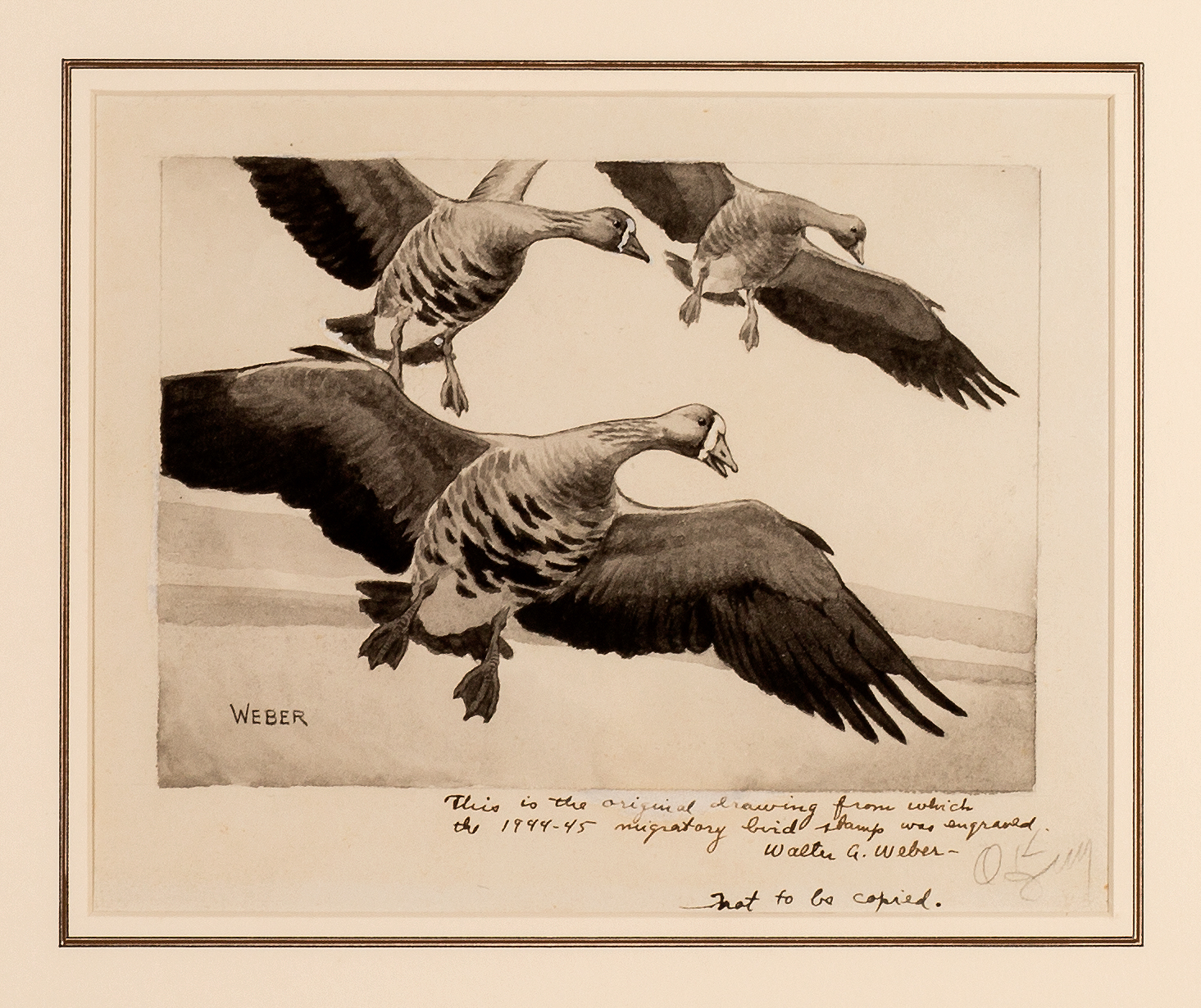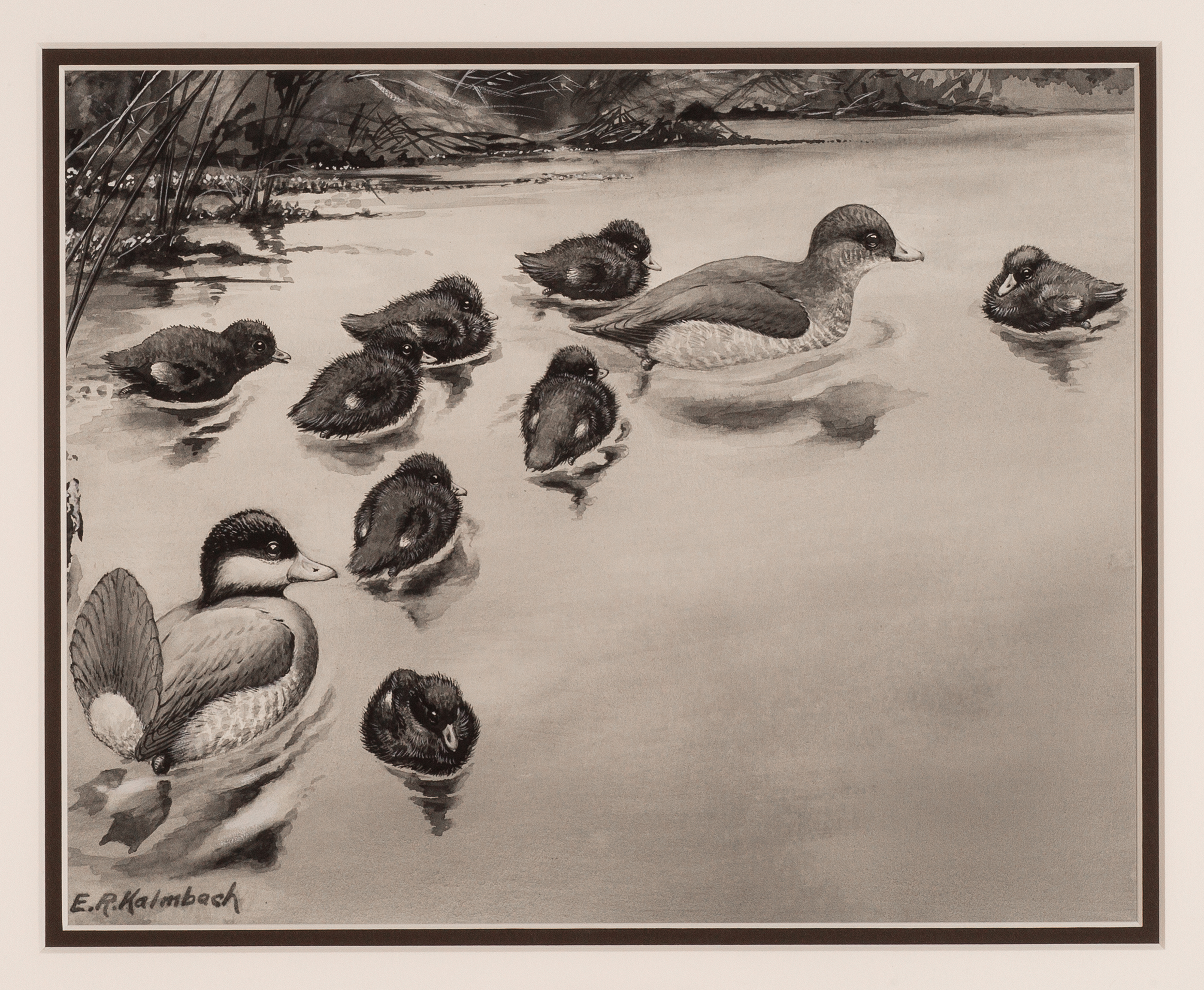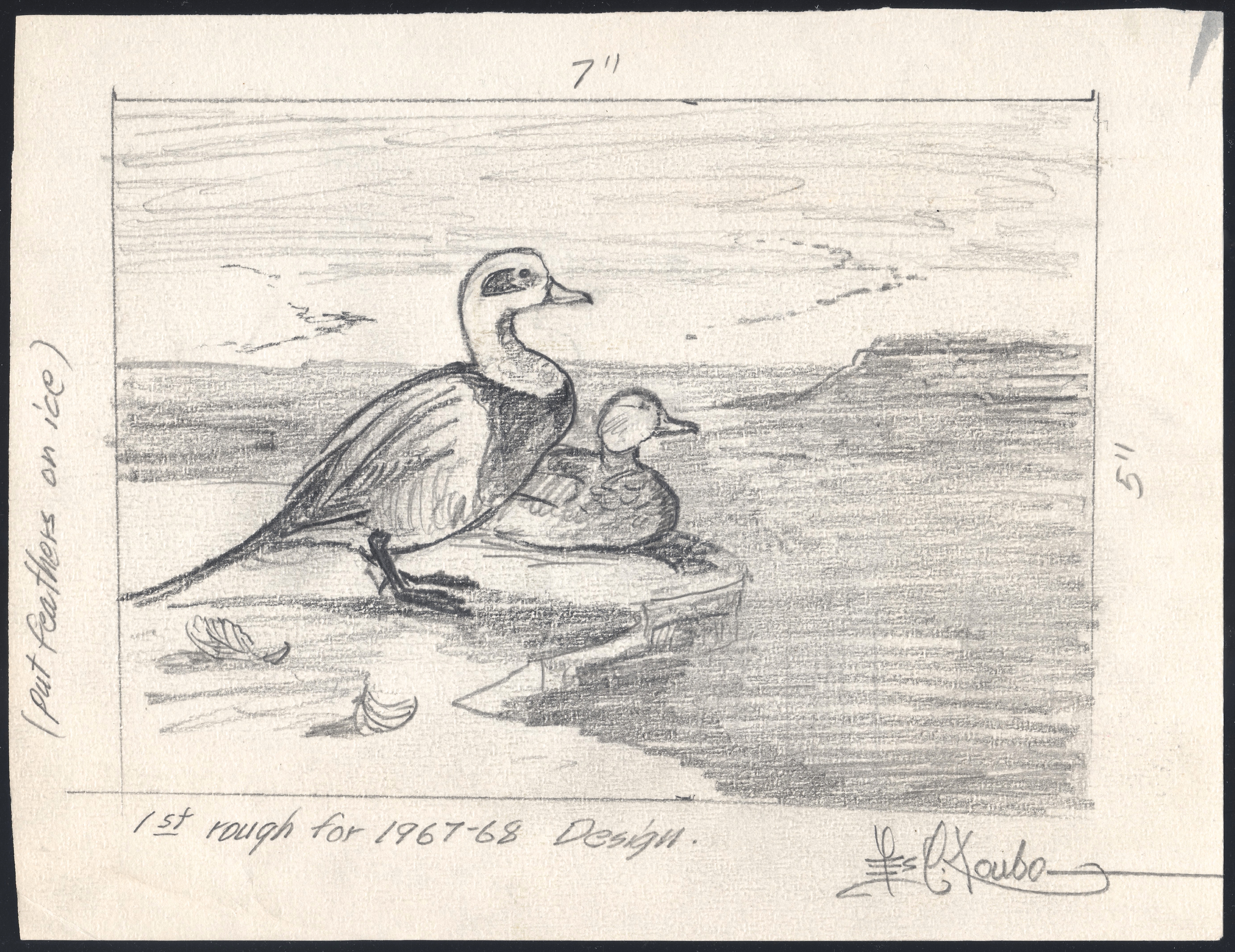Original Art
The first step in producing a federal waterfowl stamp is to have an artist create original artwork for the central part of the stamp design. In philatelic terms, this central image is referred to as the vignette.
Prior to 1950, when the first federal duck stamp design contest was held, a special committee was appointed within, initially, the Bureau of Biological Survey and then its successor, the U.S. Fish and Wildlife Service. This committee invited outstanding wildlife artists from across the U.S. to submit waterfowl art, one of which was selected by the committee to be used as the vignette of the new stamp.
Starting with the first design contest in 1950, artists were able to submit entries that would be evaluated by a panel of impartial judges. The entries were methodically scored and this process resulted in one winner. The winning design then served as the basis for the vignette on the next stamp. For a more detailed discussion about the origins and history of the annual art contest, see Walter A. Weber: Winner of the First Federal Duck Stamp Contest – Part Three and The Million Dollar Duck...
The original art is a fundamental part of the waterfowl stamp story and is actively pursued by very advanced collectors. There are several classifications or stages of original art that are generated in sequence by the artist and while they are all collectible – it is important to have an understanding of the timeline.
When the artists is first rendering his design conceptualization, it is almost always done relatively quickly with pencil and paper in the form of a rough sketch (see figures 1).
Once the artist is satisfied with the pencil composition, considerable time is taken to create the finished product to be submitted to either the Department of the Interior selection committee or the contest itself. In the early days, the chosen medium was often a wash. A wash is created using the same process as a watercolor painting but with only one or two colors – as opposed to many (see Figures 2, 3 and 4).

Figure 2. Original wash entry for the 1944-45 federal waterfowl stamp by Walter Weber, selected by committee.

Figure 3. Original wash and gouache entry for the 1950-51 federal waterfowl stamp by Walter Weber. This is the very first winner of the annual Duck Stamp Contest, held in 1950.

Figure 4. Original wash and gouache entry for the 1967-68 federal waterfowl stamp by Leslie Kouba. This is the finished product that was made subsequent to the original sketch shown in Figure 1.
Starting with the 1969 art contest (for the 1970-71 stamp), artists were requested to submit full color entries. The honor of winning the 1969 contest went to Edward J. Bierly (see Figures 5 and 6).
If the original entry was selected by the committee or chosen by the judges to represent an actual stamp design, the artist was often asked to create copies by art enthusiasts or collectors. In some case a number of copies were made and it is not always easy to differentiate them from the original (see Figures 7 and 8).

Figure 7. Original artist copy of the design selected for the 1941-42 federal waterfowl stamp by Edwin R. Kalmbach.

Figure 8. Original artist copy of the design selected for the 1987-88 federal waterfowl stamp by Arthur Anderson.
Before purchasing any federal original waterfowl stamp art, it is highly recommended to secure the opinion of an expert as to exactly what you are dealing with. It could be either the original entry, a copy made by the artist shortly after the stamp was issued or a copy made years later.
In general, collector and actual value declines significantly with each respective "generation" of original art. The original entry that was either chosen by committee or declared a contest winner is by far far and way the most collectible and valuable. This is followed by an artist copy that was made shortly after the artwork was chosen or the stamp was issued. Artist copies made years later have far less value.
At this point, the most widely respected authority on original waterfowl stamp art is Russell Fink, of Lorton, Virginia. For additional information, see Duck Stamp Prints by Stearns and Fink.
The two most comprehensive collections of original federal waterfowl stamp art have been created by Richard Perry, of Baltimore and Richard Prager of New York. In the case of the latter, Prager acquired the Perry collection in its entirety and has since greatly added to it. Currently, the Prager collection of original federal waterfowl stamp art includes over 50 original entries and artist copies. To see a gallery featuring his collection, click here.
In 2017, Richard Prager was selected to be a judge for the annual art contest. For an insider's look at the contest by the foremost collector of original federal waterfowl stamp art, click here.




